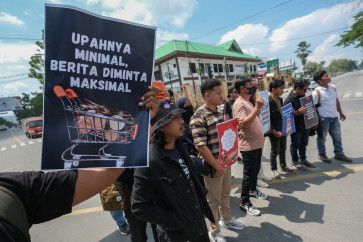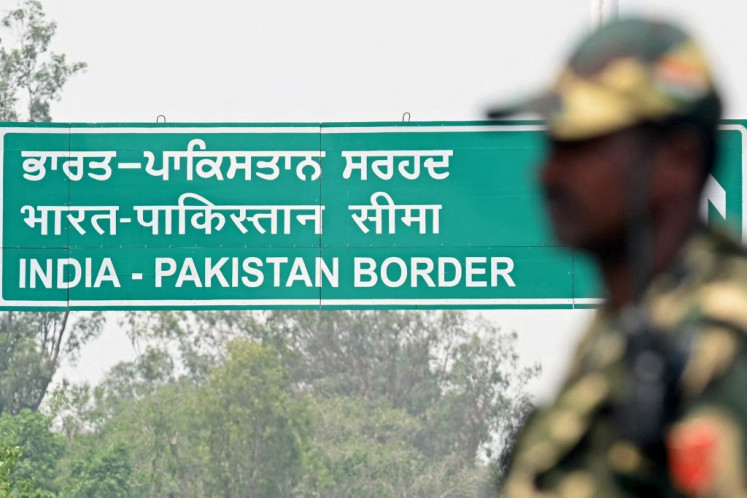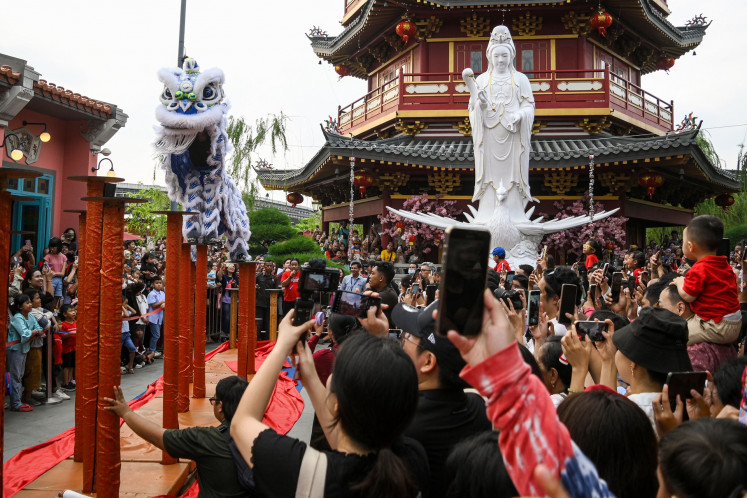ASEAN urged to act as investors eye Indo-Pacific
As the trend of economic activities continues to shift from the West to the East, the onus is on ASEAN member states to attract funding in a way that serves Indo-Pacific integration, a forum of regional stakeholders hears
Change text size
Gift Premium Articles
to Anyone

A
Experts on the Indo-Pacific say that ASEAN should figure out how to integrate various schemes for infrastructure projects in its backyard, so it may improve its standing among regional players and attract those with deep pockets to the region.
Lee Ying Hui, a senior analyst for the Institute of Defense and Strategic Studies at the S. Rajaratnam School of International Studies, said that while there was still no specific data set that looked at the Indo-Pacific context, there was a growing demand for infrastructure in the region.
“We definitely see the demand for maritime trade to be very strong in the next decade,” she said during a seminar cohosted by the Foreign Ministry and Padang State University on Monday.
The second-track seminar was attended by foreign policy experts and officials from countries like Australia, India, Japan, South Korea, France, Russia and Thailand, as well as representatives of the Asian Development Bank (ADB) and the Asian Infrastructure Investment Bank (AIIB), all speaking in their personal capacity.
Lee said that infrastructure projects in the region required significant funding but there was a financing gap in the region, with a huge disparity between demand and available finances.
She cited ADB data, which states that multilateral development banks (MDB) have financed an estimated 2.5 percent of infrastructure investments in developing Asia.
One solution would be to expand the existing Master Plan on ASEAN Connectivity to one that spans the entire network of the Indo-Pacific region in order to cater to various initiatives and interested financiers, said Prapat Thepchatree, director of the Center for ASEAN Studies at Thammasat University.
“Right now, we have other regional connectivity projects like the [Belt and Road Initiative] from China and also [from] Japan, [South] Korea, India, the United States and maybe some other countries as well,” he said.
“We need to integrate all these into one plan and [...] connect the connectivities.”
The idea of a shared concept for the Indo-Pacific region, one of a regional order that straddles the Indian and Pacific oceans, has become more prevalent in recent debates, especially for Indonesia as it controls four vital sea lanes for trade and communications linking both bodies of water.
Situated in the heart of the region, Indonesia pushed for ASEAN to have its own position on the matter, with a view to discuss “an ASEAN-led regional” order at the East Asia Summit (EAS).
The EAS is a forum that consists of the 10 ASEAN member states and eight other partner countries, most of whom already have their own interpretations of an Indo-Pacific strategy.
So far, ASEAN has been pragmatic when it comes to financing infrastructure projects, said Dewi Fortuna Anwar, research professor at the Indonesian Institute of Sciences (LIPI).
“We need to continue to be very flexible — there’s no free lunch. We have to make sure that when we need external funding, there should be no political strings attached,” she said.
Siswo Pramono, the Foreign Ministry’s head of policymaking, said that Monday’s seminar aimed to explore a viable financing model for connectivity infrastructure development in the Indo-Pacific. The seminar is part of a series of events leading up to the High Level Dialogue on Indo-Pacific cooperation to be held in Jakarta next week.









